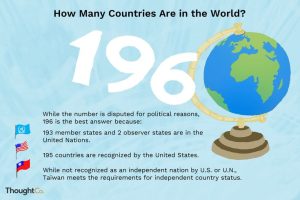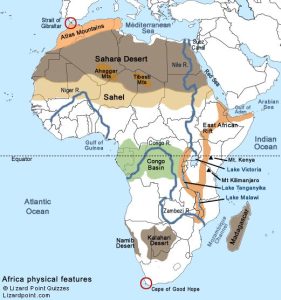How Many Countries Are There in the World
To begin our exploration, let’s define what we mean by a “country.” A country, also known as a nation-state, is a sovereign political entity recognized by the international community. It possesses defined borders, a government, and the ability to conduct foreign relations. However, the actual number of countries can be influenced by various historical, political, and geographical factors.
Historical Overview of Countries
Throughout history, the concept of countries has evolved. From empires and city-states to modern nation-states, the number of recognized countries has seen significant changes. For example, the fall of the Soviet Union in 1991 led to the emergence of several independent countries in Eastern Europe and Central Asia.
Don’t Forget to Check Out Our Website: universalbrowse
Present-Day Country Count
As of today, there are approximately 195 recognized countries globally. This number, however, is not set in stone and can vary depending on how one defines “recognized.” The United Nations plays a significant role in determining the count of recognized countries.
How Many Recognized Countries Are There?
The United Nations currently recognizes 193 member states, making it a common reference point for the number of countries in the world. Two UN observer states, the Holy See (Vatican City) and Palestine, bring the total to 195.

Unrecognized and Partially Recognized Territories
Beyond the United Nations list, there are territories that are not universally recognized as independent countries. Taiwan, for instance, operates as a separate entity with its own government but lacks widespread international recognition as a sovereign state.
The Case of Taiwan
The status of Taiwan is a matter of contention, with some countries recognizing it as a country while others do not. This example illustrates the complexities of determining the precise number of countries in the world.
Micronations
In addition to recognized and unrecognized countries, there are also “micronations.” These are entities that claim to be independent but are not widely accepted as countries. Often, micronations are formed for symbolic or humorous purposes and have limited influence.
Disputed Territories
Disputed territories add further complexity to the country count. Various regions are claimed by multiple countries, leading to ongoing disputes and conflicting claims.
Changing Borders and New Countries
Borders are not static, and history has shown that new countries can emerge as a result of geopolitical changes. For instance, South Sudan became an independent country in 2011, following a referendum that saw it split from Sudan.
The Impact of Geography
Geography also plays a role in the number of countries. Island nations, such as the Maldives and Iceland, consist of a single landmass, while landlocked countries like Switzerland and Austria have unique challenges and dependencies on neighboring nations.

Colonial Legacy and Independence Movements
The legacy of colonialism has left a lasting impact on the world map. Many countries gained independence from colonial rule in the 20th century, further influencing the number of countries.
The Future of Country Count
The count of countries in the world is not set in stone. Future geopolitical changes, independence movements, and shifting alliances can all influence this number.
Conclusion
In conclusion, the question of how many countries there are in the world is a nuanced one. Depending on the criteria you use for recognition, the count may vary. Additionally, political and historical factors can further complicate this matter. As the world continues to evolve, so too will the count of recognized countries.
FAQs
Q. Is it possible for new countries to emerge in the future?
A. Yes, geopolitical changes and independence movements can lead to the creation of new countries.
Q. Why doesn’t the United Nations list match the total count of recognized countries?
A. Some territories are not universally recognized, leading to variations in the count.
Q. Are there any territories that are not claimed by any country?
A. Yes, there are unclaimed territories, such as Bir Tawil between Egypt and Sudan.
Q. How are disputed territories typically resolved?
A. Disputed territories are often subject to negotiations, international arbitration, or remain in a state of ongoing dispute.
Q. What’s the difference between a country and a micronation?
A. A country is a recognized sovereign state, while a micronation is an entity that claims independence but lacks widespread international recognition.
